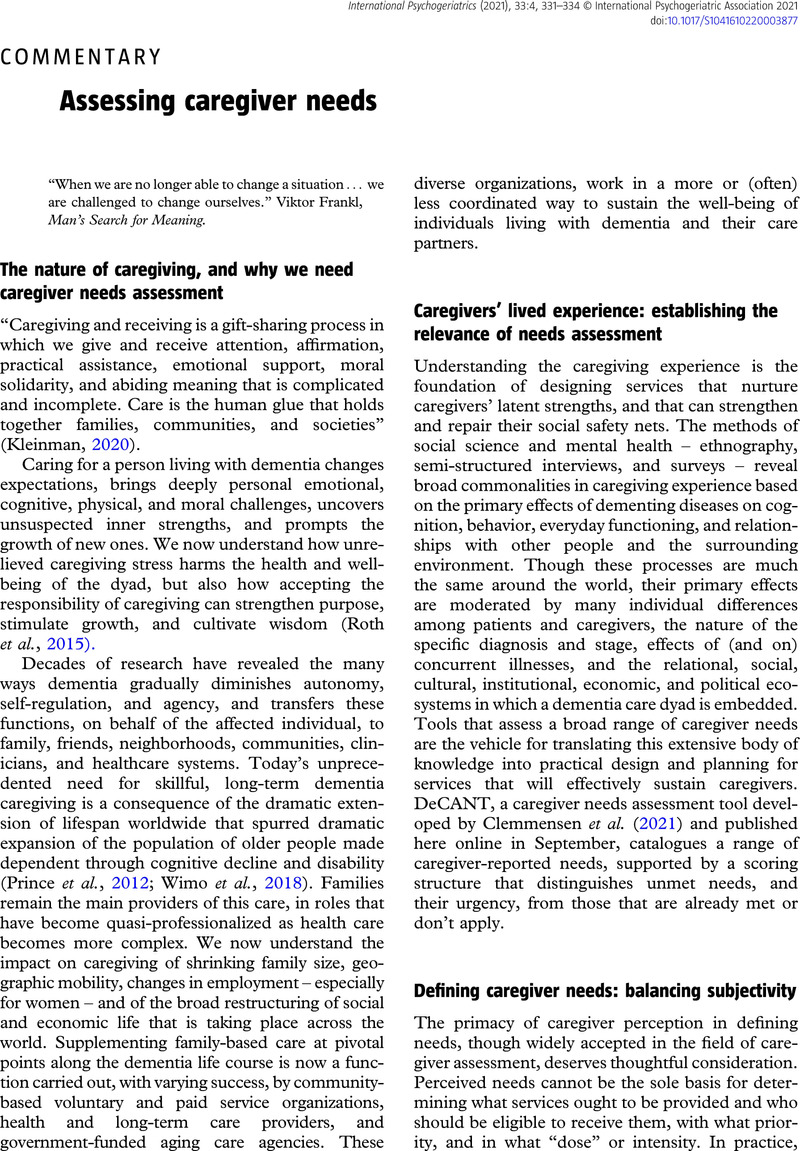Crossref Citations
This article has been cited by the following publications. This list is generated based on data provided by Crossref.
Li, Kin-Kit
Leung, Cyrus L. K.
Yeung, Dannii
Chiu, Marcus Y. L.
Chong, Alice M. L.
Lam, Beck C. Y.
Chung, Edwin K. H.
and
Lo, T. Wing
2023.
Development and validation of the caregiver needs and resources assessment.
Frontiers in Psychology,
Vol. 14,
Issue. ,
Rojas-Marín, María Zoraida
Chaparro Diaz, Lorena
and
Carreño Moreno, Sonia Patricia
2023.
Validez y confiabilidad del instrumento Adopción del rol de cuidador con uso de medicamentos.
Avances en Enfermería,
Vol. 41,
Issue. 2,





